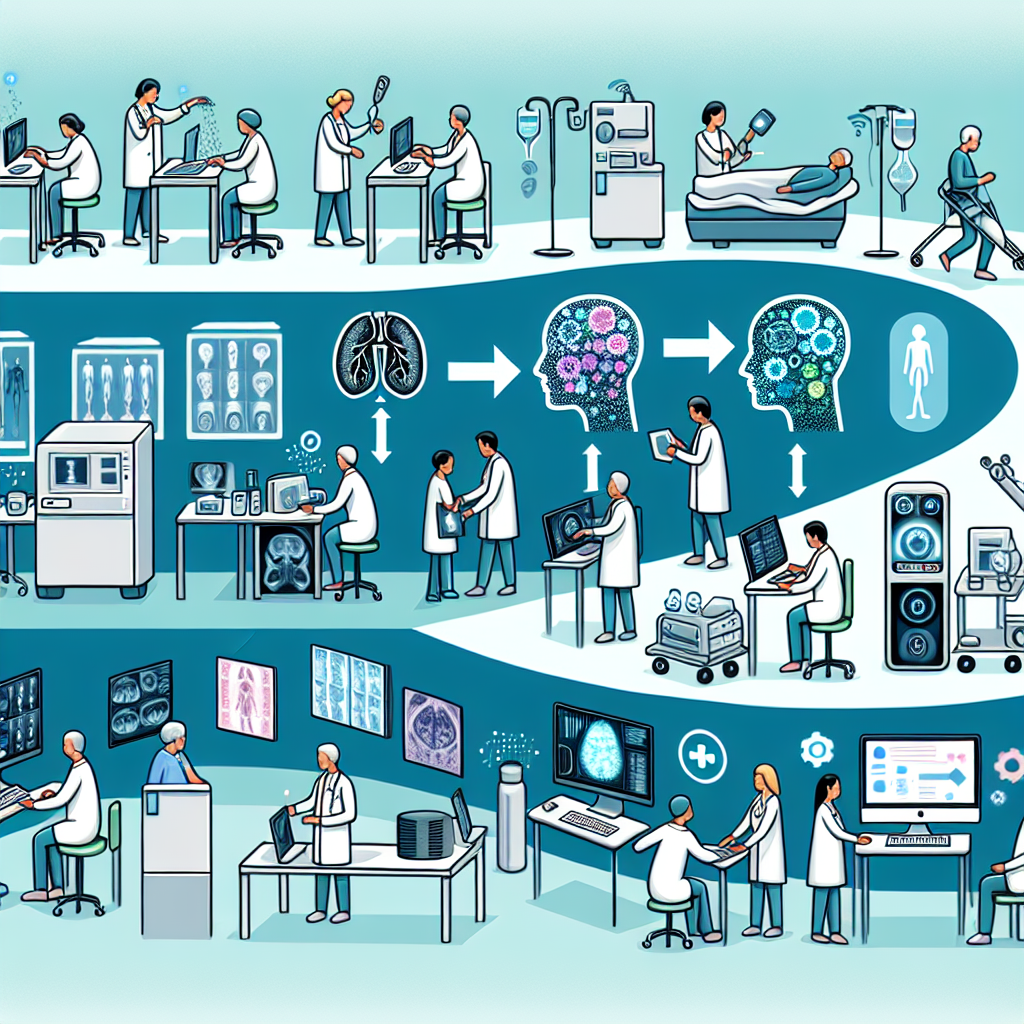Artificial intelligence (AI) has revolutionized the field of healthcare diagnostics and imaging in recent years. By leveraging advanced algorithms and machine learning techniques, AI-driven solutions have the potential to significantly improve the accuracy and efficiency of diagnostic processes, leading to better patient outcomes and reduced healthcare costs. In this article, we will explore the evolution of AI-driven solutions in healthcare diagnostics and imaging, and the impact they are having on the industry.
The Evolution of AI-Driven Solutions in Healthcare Diagnostics and Imaging
AI-driven solutions in healthcare diagnostics and imaging have come a long way since their inception. In the early days, AI algorithms were primarily used to assist radiologists in interpreting medical images, such as X-rays, MRIs, and CT scans. These algorithms were trained on large datasets of medical images to recognize patterns and anomalies that could indicate the presence of a disease or condition.
As technology advanced, AI-driven solutions began to be used for a wider range of diagnostic tasks, such as analyzing genetic data, identifying biomarkers, and predicting patient outcomes. These solutions have the potential to revolutionize the way healthcare providers diagnose and treat patients, by providing more accurate and timely information than ever before.
One of the key benefits of AI-driven solutions in healthcare diagnostics and imaging is their ability to process and analyze large amounts of data quickly and accurately. This allows healthcare providers to make more informed decisions about patient care, leading to improved outcomes and reduced healthcare costs.
AI-driven solutions are also helping to address the growing shortage of healthcare professionals, particularly in areas such as radiology and pathology. By automating routine tasks and flagging potential issues for further review, AI algorithms can help healthcare providers work more efficiently and effectively, freeing up their time to focus on more complex cases.
Another key advantage of AI-driven solutions in healthcare diagnostics and imaging is their ability to continuously learn and improve over time. As more data is fed into the algorithms, they become more accurate and reliable, leading to better diagnostic results and treatment recommendations.
Today, AI-driven solutions are being used in a wide range of healthcare settings, from hospitals and clinics to research laboratories and pharmaceutical companies. These solutions are helping to accelerate the pace of medical research and drug development, by identifying new drug targets, predicting patient responses to treatment, and optimizing clinical trial design.
Some of the most exciting developments in AI-driven healthcare diagnostics and imaging include:
– Computer-aided diagnosis: AI algorithms are being used to assist healthcare providers in diagnosing diseases and conditions, by analyzing medical images and identifying patterns that may be difficult for the human eye to detect. This can help to improve the accuracy and speed of diagnosis, leading to better patient outcomes.
– Personalized medicine: AI-driven solutions are being used to analyze genetic data and other patient information, in order to tailor treatments to individual patients. This can help to optimize treatment outcomes and reduce the risk of adverse reactions.
– Predictive analytics: AI algorithms are being used to predict patient outcomes and identify high-risk patients, based on a range of factors such as medical history, lifestyle, and genetic predisposition. This can help healthcare providers to intervene early and prevent the onset of serious conditions.
– Remote monitoring: AI-driven solutions are being used to monitor patients remotely, by analyzing data from wearable devices and other sensors. This can help to identify changes in patient health status before they become critical, and enable healthcare providers to intervene proactively.
FAQs
Q: How accurate are AI-driven solutions in healthcare diagnostics and imaging?
A: AI-driven solutions have been shown to be highly accurate in a wide range of diagnostic tasks, often outperforming human experts in certain areas. However, it is important to note that AI algorithms are not infallible, and should be used as a tool to assist healthcare providers rather than replace them entirely.
Q: Are AI-driven solutions safe and secure?
A: AI-driven solutions in healthcare diagnostics and imaging are subject to strict regulations and guidelines to ensure patient privacy and data security. Healthcare providers must adhere to strict protocols when using AI algorithms, to protect patient data and ensure the accuracy and reliability of the results.
Q: How are AI-driven solutions trained?
A: AI algorithms are trained on large datasets of medical images, genetic data, and other patient information, in order to learn to recognize patterns and anomalies that may indicate the presence of a disease or condition. The more data that is fed into the algorithms, the more accurate and reliable they become.
Q: What are the limitations of AI-driven solutions in healthcare diagnostics and imaging?
A: While AI-driven solutions have shown great promise in improving the accuracy and efficiency of diagnostic processes, there are still some limitations to consider. For example, AI algorithms may struggle to interpret complex or ambiguous cases, and may require human intervention for more difficult cases.
In conclusion, AI-driven solutions in healthcare diagnostics and imaging have the potential to transform the way we diagnose and treat patients, by providing more accurate and timely information than ever before. By leveraging advanced algorithms and machine learning techniques, these solutions are helping to improve patient outcomes, reduce healthcare costs, and accelerate medical research and drug development. As technology continues to advance, we can expect to see even more exciting developments in this field, leading to a brighter future for healthcare around the world.

